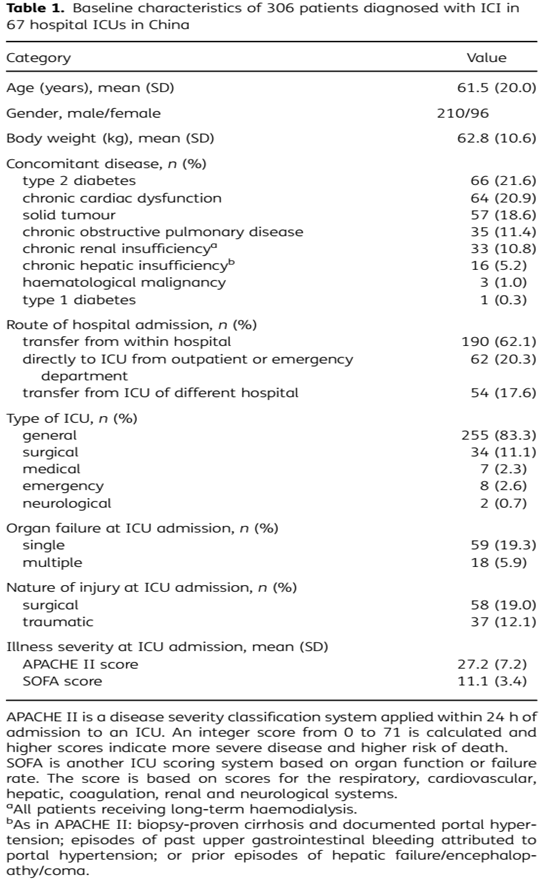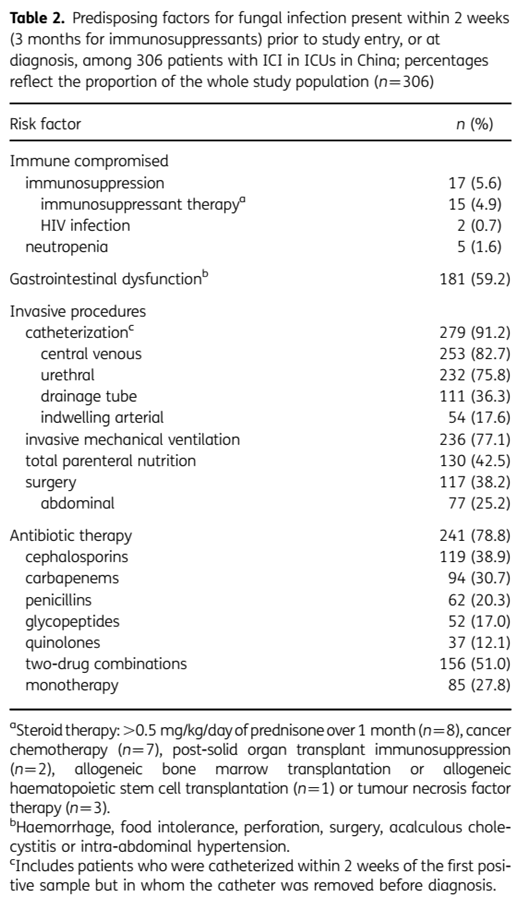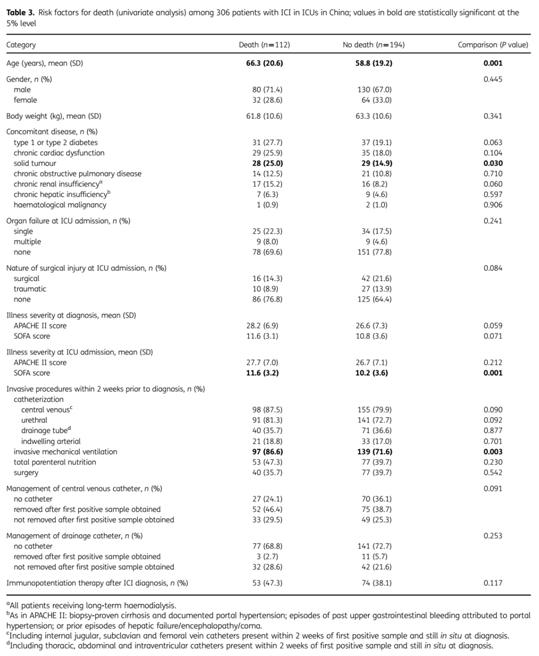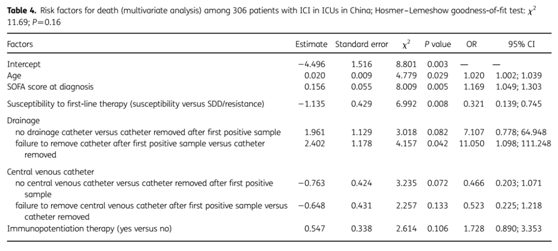 Industry Nouvelles
Industry Nouvelles Objectives: To describe the epidemiology, microbiology and management of invasive Candida infection (ICI) in intensive care units (ICUs) in China.
Methods: A multicentre, prospective, observational study in 67 hospital ICUs across China. Patients were ≥18 years old with clinical signs of infection and at least one of the following diagnostic criteria: (i) histopathological, cytopathological or microscopic confirmation of yeast cells from a normally sterile site; (ii) at least one peripheral blood culture positive for Candida; and (iii) positive Candida culture from a normally sterile site. The China-SCAN study is registered with Clinical Trials.gov (NCT T01253954).
Results: ICI incidence was 0.32% (306 patients/96060 ICU admissions) and median time between ICU admission and diagnosis was 10.0 days. Candida albicans was the most prevalent single isolate (41.8% of patients), although non-albicans species accounted for the majority of infections. Diagnostic confirmation was based solely on at least one positive blood culture in 290 (94.8%) cases. Treatment was initiated after diagnostic confirmation in 166/268 (61.9%) patients. Triazoles (62.7%) and echinocandins (34.2%) were the most commonly used antifungal agents; first-line therapy was typically fluconazole (37.7%). The median duration of antifungal therapy was 14 days. The mortality rate was 36.6% (112/306); the median time between diagnosis and death was 14.5 days. Mortality was higher in older individuals, those with solid tumours, those with recent invasive mechanical ventilation and those with a higher sequential organ failure assessment score at diagnostic confirmation. Susceptibility to first-line antifungals was associated with lower mortality than dose-dependent susceptibility or complete resistance (P¼0.008).
Conclusions: More infections were caused by non-albicansthan Candida albicansstrains. The majority of patients were treated only after diagnostic confirmation, rather than empirically. First-line antifungal susceptibility was associated with lower mortality.
The original paper adopted from J Antimicrob Chemother doi:10.1093/jac/dkt083
The related results are shown as follows:








Copyright @ 2015 Tianjin Era Biology Technology Co., Ltd.All Rights Reserved.